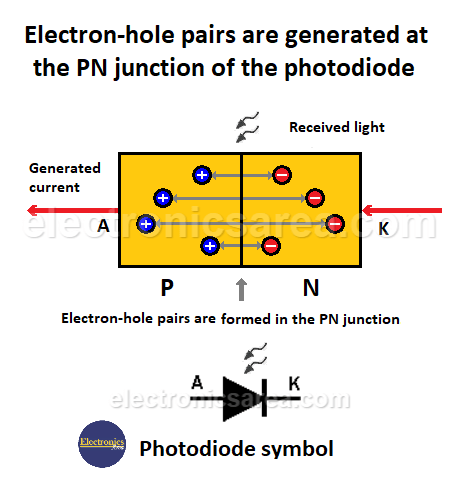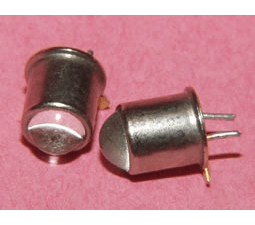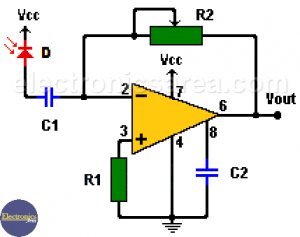Home / Semiconductors /
What does a photodiode do?
Photodiodes produce a leakage current that is directly proportional to light intensity. This leakage current flows in the opposite direction to the current in a conventional diode. Comparing a photodiode to a LDR, we see that the photodiode has a linear response. Also, the response speed of the photodiode is much slower.
How does the photodiode work?
Light energy pushes electrons away from doped silicon atoms, leaving behind the corresponding holes. Electron-hole pairs are generated at the PN junction. These electron-hole pairs are proportional to the light, so the current through the photodiode is proportional to the light.
A simple way to measure the current generated by a photodiode is to connect it to a constant voltage source and measure the current through it with an ammeter. The current generated is not very large, so amplifying devices are usually needed to get a higher current. One way to do this is to use operational amplifiers.
The current that flows through a photodiode is not the same when it is illuminated with light of different wavelengths. It is convenient to select the appropriate photodiode to achieve the desired response.
It must be taken into account that the response is more sensitive to temperature at low illumination levels, and the response is no longer as linear.
Incident Light (red arrows). Direction of the generated current (blue arrow).
The photodiode current flows from the cathode to the anode and is called the leakage current. The photodiode can be forward biased, in which case the light has no effect on this component, and it works like a common diode.
Most photodiodes are equipped with a lens. This lens focuses the incoming light so that the response to light exposure is better. Unlike the photoresistor, it responds to changes from dark to light and vice versa much faster and can be used in circuits with shorter response time.
Image from: Wikipedia
If we place a photodiode between the collector and the base of the bipolar transistor (with the cathode of the diode pointing to the collector of the transistor), we have the equivalent circuit of the phototransistor.
Photodiode Key Features
- Responsitivity: It is the ratio between the current generated and the incident light.
- Dark Current: The current through the photodiode in the absence of light when operating in the photoconductive mode.
- Quantum Efficiency, Q.E.: Defined as the fraction of incident photons that contribute to the photocurrent.
- Non-linearity: A silicon photodiode is considered linear when the generated photocurrent increases linearly with the incident light power.
Advantages
- Excellent linearity of output current versus incident light
- Low noise
- Low cost
- Compact and lightweight
- Long lifetime
- High quantum efficiency (typically 80%)
Applications
This component can be used as a light detector device because it converts light into electric current. Any change in the light causes a change in the electric current. This variation is used to report that there has been a change in the level of illumination.
Photodiodes are used in smoke detectors, receivers for infrared remote controls used to control everything from televisions to air conditioners.
An example of a simple application for the photodiode is the Current-to-Voltage Converter using an operational amplifier.




